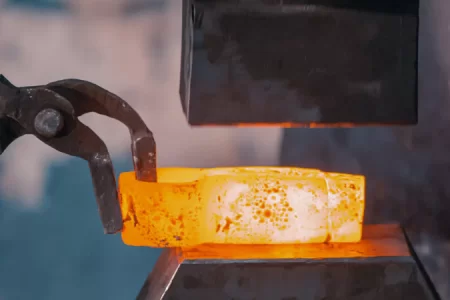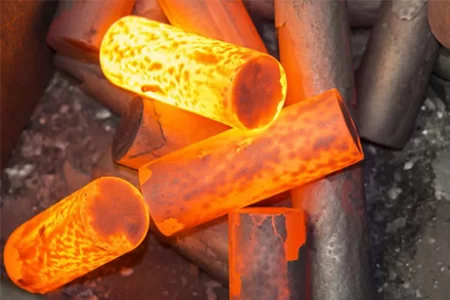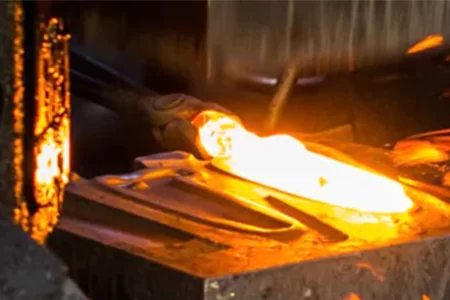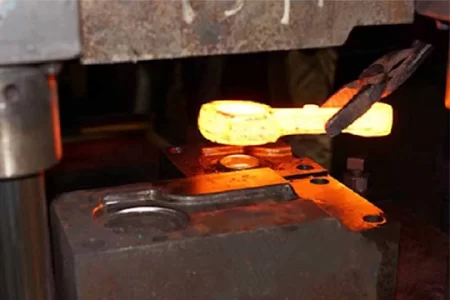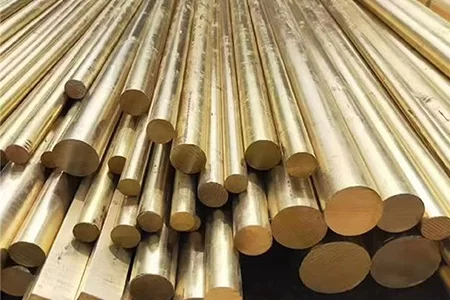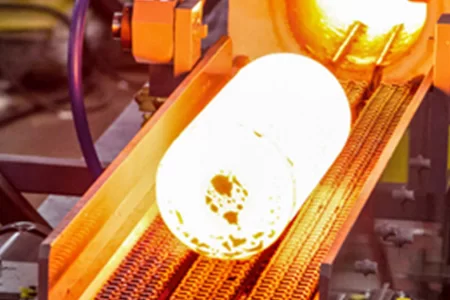HULK Metal will continuously update the dynamics of the metal products industry, to support your decision-making.

Hulk Metal News
Share what's new
-
Home>
-
Blog>
-
Technology>
What should you pay attention to when using the come along clamp?

Precautions
The come along clamp is an important tool for tightening and fixing wires in power construction. Its correct use is directly related to the quality and safety of construction. When using the come along clamp, you need to pay attention to the following aspects:
Choose the appropriate specifications, models and materials
The specifications, models, and materials of the come along clamp should match the cables used. Different types of come along clamps are suitable for different wire types and specifications, for example:
Aluminum alloy profile transmission line clamp: Applicable to aluminum alloy wires.
Insulated layer transmission line clamp: For wires with an insulation layer.
Stranded come along clamp: Applicable to stranded wire.
Ground come along clamp: Used to fix the ground wire.
Single-peach clamp and double-peach clamp: Choose a single clamp or double clamp structure as needed.
Frog-type clamp: Applicable to specific types of wires.
Anti-twist wire rope clamp: Used to prevent the wire rope from twisting during use.
When selecting a wire gripper, you should select the appropriate wire gripper according to the material, diameter, and construction requirements of the wire to ensure that it can firmly clamp the wire without damage.
Check the integrity of the wire gripper
Before use, carefully check whether the wire gripper has defects such as cracks, bends, inflexible drive shafts, or wear of the jaws. If the above problems are found, stop using it immediately and replace it with a new wire gripper to avoid accidents during construction.
Ensure that the compressive strength meets the requirements
The compressive strength of the wire gripper should meet the requirements of traction wires and wire ropes, and its safety factor should not be less than 3. This means that the wire gripper should be able to withstand at least three times the actual working load to ensure that it will not break or fail during use.
Ensure the clamping force of the wire gripper
Under the maximum use tension of the wire or ground wire, the wire gripper should be able to firmly clamp the wire or wire rope without sliding, falling off or damaging the wire. This requires that the design and manufacture of the wire gripper must be precise and operate correctly during use.
Keep the come along clamp light and flexible
The come along clamp should be designed to be light and flexible for easy operation. This not only improves construction efficiency, but also reduces the labor intensity of operators.
Avoid strong impact and keep clean
During use, avoid strong impact on the come along clamp to prevent damage to its structure. At the same time, dust on the tool should be removed after each use to keep it clean to extend its service life.
Do not disassemble the come along clamp without authorization
Do not disassemble the come along clamp without professional training or authorization. Otherwise, it may cause tool failure or even cause serious safety accidents.
Regular inspection and maintenance
After long-term use, if the come along clamp slips, it should be stopped immediately and repaired or replaced. Regular inspection and maintenance are important measures to ensure the safety and reliability of the come along clamp.
Avoid over-range use
Do not use the come along clamp for wires outside its design range. For example, using an unsuitable come along clamp may result in loose clamping or even damage the wire, posing a safety hazard.
Follow the operating procedures
When using the come along clamp, the operating procedures should be strictly followed to ensure that each step is carried out in accordance with the standards. This not only ensures the quality of construction, but also ensures the safety of operators.
Specific problems and countermeasures in the use of come along clamps
In the practice of power construction, the use of come along clamps needs to take into account a variety of factors. In order to more comprehensively ensure the safety of use, the following specific countermeasures and suggestions are provided for common problems:
Compatibility of come along clamps with cables
Choosing a suitable come along clamp is not only about matching specifications and materials but also involves the construction environment, tension requirements, and other details:
·The importance of material matching: For example, aluminum alloy conductors and galvanized steel strands have different tensile strength and wear resistance due to different materials. Using unmatched come along clamps may cause cable damage or come along clamp failure.
·Construction environment impact: In high temperature, humid or corrosive environments, come along clamps with corrosion-resistant coatings (such as galvanized or chrome-plated surface treatments) should be selected to ensure service life and performance.
Improvement suggestions: For different construction scenarios, choose a wire gripper model with professional certification (such as CE or ISO certification), and check the technical parameters in detail when purchasing.
Comprehensive inspection before use
Any slight damage to the wire gripper may affect its performance, so the inspection before use is particularly important:
·Inspection scope: including whether there are cracks and bends on the appearance, whether the jaws are worn, and whether the transmission shaft is flexible.
·Performance test: The clamping force and tensile strength of the wire gripper can be verified by simulated tensile test.
Improvement suggestions: The construction team can configure portable testing equipment to conduct tensile tests on the wire gripper regularly, and establish tool files to record the frequency of use and test data of each wire gripper.
Compressive strength and safety factor
The safety factor of the wire gripper usually needs to reach or exceed 3 times the actual tension, which is an important guarantee to avoid accidents:
·Choose an appropriate load range: Different models of wire grippers have different load ranges. For example, light wire grippers are suitable for small wire construction, while heavy wire grippers are used for pulling large-section wires.
· Clear safety boundaries: If the load approaches or exceeds the design limit of the wire gripper during use, the operation should be stopped immediately.
Improvement suggestions: When selecting a wire gripper according to project requirements, you should consult professional manufacturers or technical experts to ensure that the equipment used can fully meet the project requirements.
Tool maintenance and storage
The wire gripper is a high-strength tool. Daily maintenance and storage directly affect its service life and performance:
· Cleaning and lubrication: After each use, the dust and oil on the surface of the wire gripper should be removed, and lubricating oil should be added to the shaft regularly.
· Storage conditions: Avoid storage in high humidity or chemical corrosion environments. It is best to use a special toolbox for protection.
Improvement suggestions: In large-scale construction projects, it is recommended to set up a special tool management position to ensure that the wire gripper and other equipment are properly maintained.
Correct operation process
Irregular operation is one of the main causes of construction accidents. Therefore, operators should receive systematic training and use the wire gripper strictly in accordance with the operating procedures:
· Precautions when tightening the wire: Make sure that the wire gripper is completely in contact with the wire to prevent deflection or insufficient clamping force.
·Choice of operating environment: Safety ropes and anti-fall devices must be used when working at high altitudes or in complex terrain.
Improvement suggestions: The construction party can organize safety training regularly and improve the emergency response capabilities of construction personnel through simulation exercises.
Safety hazard investigation during use
During the use of the come along clamp, some unexpected situations may occur, such as the come along clamp loosening and cable damage. In response to these problems, construction personnel should quickly investigate and take measures:
·Analysis of the cause of the loosening of the come along clamp: It may be caused by insufficient clamping force or improper selection of cable specifications, and it is necessary to readjust or replace the appropriate model.
·Handling of cable damage: If the conductor or steel strand is found to be worn or broken during construction, the work should be stopped immediately to check the compatibility of the cable and the come along clamp.
Improvement suggestions: It is recommended to equip the construction site with spare parts to quickly replace the problematic come along clamp or cable to reduce construction delays.
Performance degradation after long-term use
After long-term use, the wire gripper may slip, wear, or reduce the clamping force, which is closely related to its design life and use environment:
·Fatigue damage: Long-term use will lead to the deterioration of metal material performance, especially under high-strength tension and harsh environments.
·Wear problem: The wear of the jaws diagonal will directly affect the clamping force of the wire gripper.
Improvement suggestions: The construction team should formulate a replacement plan according to the service life of the wire gripper, regularly check the key parts of the tool, and replace the wire gripper that has reached the end of its service life in time.
Precautions for special types of wire grippers
Different types of wire grippers have their own unique requirements during use, such as:
·Insulation layer wire gripper: Avoid using it in a high-temperature environment to prevent damage to the insulation layer.
Anti-twist wire rope wire gripper: Check the anti-twist function regularly.
Double peach wire gripper: Ensure that the clamping force is evenly distributed during use to prevent slippage due to uneven force on one side.
Improvement suggestions: Be familiar with the characteristics and applicable scope of different types of come along clamps, and choose the appropriate product model according to construction needs.
come along clamps play a key role in power construction. Their correct use is not only related to construction quality, but also directly affects construction safety. By selecting the right model, regular inspection and maintenance, following operating procedures, and strengthening personnel training, the use effect and life of the come along clamp can be effectively improved. For construction companies, establishing a sound equipment management system and safety supervision system can fundamentally reduce the risk of use and ensure the smooth progress of construction.
Article Navigation
Article Navigation
Industries
Foundries
-

July.01, 2024
Difference between hot forging and cold forging
READ MORE
-

June.27, 2024
What are the advantages and disadvantages of the hot forging process?
READ MORE
-

January.18, 2024
Forging: What Is It? What Are The Different Types of Hot Forging?
READ MORE
-

November.29, 2024
What is steel forging?
READ MORE
-

July.30, 2024
What are the materials for hot forging?
READ MORE
-

July.03, 2024
What are the processes of hot forging?
READ MORE



